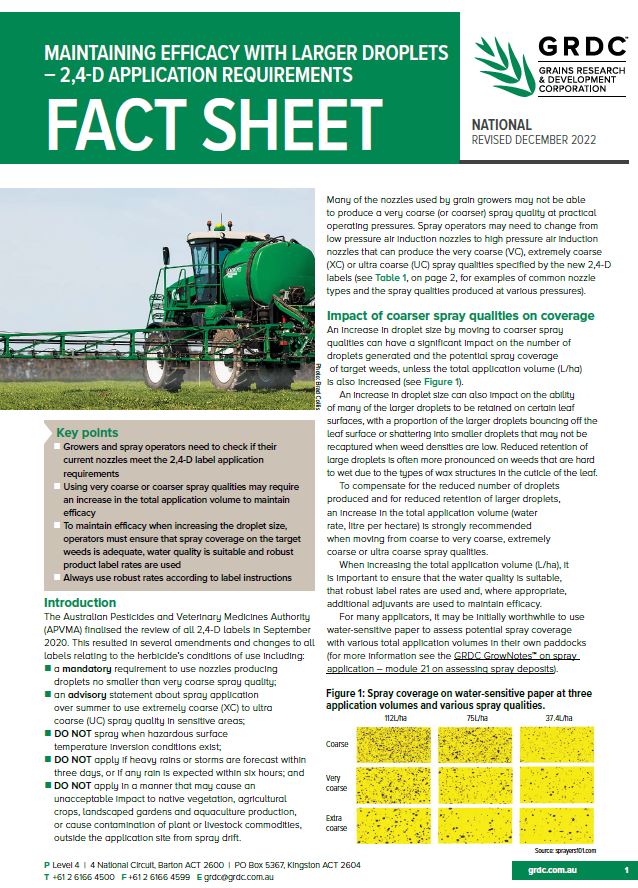Maintaining efficacy with larger droplets - 2,4-D application requirements
Maintaining efficacy with larger droplets - 2,4-D application requirements
Published: 07 Dec 2022
The Australian Pesticides and Veterinary Medicines Authority (APVMA) finalised the review of all 2,4-D labels in September 2020. This resulted in several amendments and changes to all labels relating to the herbicide’s conditions of use including:
- a mandatory requirement to use nozzles producing droplets no smaller than very coarse spray quality;
- an advisory statement about spray application over summer to use extremely coarse (XC) to ultra coarse (UC) spray quality in sensitive areas;
- DO NOT spray when hazardous surface temperature inversion conditions exist;
- DO NOT apply if heavy rains or storms are forecast within three days, or if any rain is expected within six hours; and
- DO NOT apply in a manner that may cause an unacceptable impact to native vegetation, agricultural crops, landscaped gardens and aquaculture production, or cause contamination of plant or livestock commodities, outside the application site from spray drift.
Key points
- Growers and spray operators need to check if their current nozzles meet the 2,4-D label application
requirements - Using very coarse or coarser spray qualities may require an increase in the total application volume to maintain efficacy
- To maintain efficacy when increasing the droplet size, operators must ensure that spray coverage on the target weeds is adequate, water quality is suitable and robust product label rates are used
- Always use robust rates according to label instructions.
Download PDF
Region: National

